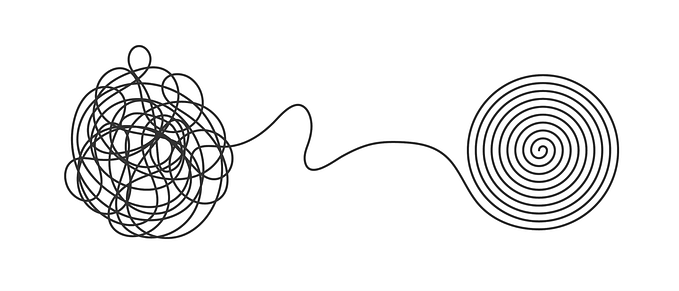How to get focused on design work
Three ways to be productive while we work from home (WFH).

 Finding focus and being in the flow become much more difficult once we switch to WFH mode. Some of us don’t have private space for a full day of work, while others need to take care of kids and constantly change gears. On top of that, we’re distracted by disturbing news and anxious about the future.
Finding focus and being in the flow become much more difficult once we switch to WFH mode. Some of us don’t have private space for a full day of work, while others need to take care of kids and constantly change gears. On top of that, we’re distracted by disturbing news and anxious about the future.
During the first couple of weeks in WFH mode, my productivity dropped significantly. I couldn’t focus on design work at all. I started experimenting with techniques that could help me adjust to this new environment. In this blog post, I’m sharing what I tried and what helped me to be more productive.

1. Create a physical environment that sets your mind to work mode
It’s easy to blame the smell of fresh bread or construction noise for being distracted. But, in reality, most distractions are internal.
Even while I’m writing these words, I’m noticing that my mind is jumping from topic to topic: “I have a meeting in 30 minutes that I need to prepare for…”; “What about that Amazon order that I placed a week ago?”; “A cup of tea would be great now”; etc.
Despite these being internal distractions, I’ve found that adjustments to your external environment can help guide your focus.
Several ideas to try:
- Turning on a desk lamp (or lighting a candle). For me, this has become a visual trigger and a reminder that I should be in work mode. Its light separates my desk from the rest of the world and makes the entire desk space calm and tranquil.
- Using a Pomodoro timer with a ticking sound during work intervals. Ticking is helping to bring my attention back to the work tasks. I am using this amazing Pomodoro app for Mac.
- An interesting idea that one of my colleagues suggested is to keep a random sound on while working. It helps reduce the distracting impact of any random salient noises. Spotify has some great “Cafe sounds” playlists and I recently found “I miss the office” web app that generates office noice.

2. Plan your design work to fit the time of day when your energy is highest
One of the misconceptions that I had in the past was that I could do work that requires focus any time of the day, provided that I was in a quiet place and I had 2–3 hours of uninterrupted time.
Technically, this is possible, but if my energy is drained, it’s harder to focus and be efficient. I noticed that after a full day of meetings when I finally got the chance to open my Figma project, I could stare at the file for a long time trying to gather my thoughts together due to fatigue.
Think about what time of the day your energy is highest and plan deep work around it.
For me, this is AM time, which means that I try to push all meetings to the afternoon and to do all routine work at the end of the day. I block out my morning calendar with events like “Work block (prefer not to have meetings)” or “Focus time (don’t schedule).” Alternatively, I use the task itself as a title, which is most effective at keeping people from scheduling over that time.

3. Adopt a “one thing” planning approach
This one is inspired by John Zeratsky and his “One Big Thing” practice.
An important thing to embrace about focus is that our capacity for focused work is limited. In fact, most people are capable of only 1–4 hours of concentrated work per day. So it is better to use this precious energy on the most important projects first.
With this in mind, every evening, when you wrap up your day, plan the next one and try to identify the one thing that you have to do tomorrow.
Usually, I review my inbox, personal planner (I use Asana), project trackers, and calendars, then I write down one big thing and 3–5 smaller things.
I prefer to use physical space for this planning (usually my notebook or Post-it notes) so that the next morning I know what to focus on right away, without hunting through multiple to-do lists and getting distracted. I don’t always do the big thing first. Depending on my schedule I may start with the smaller to-dos and move to the bigger piece when I have an uninterrupted chunk of time.
Last but not least: be kind to yourself.
There are days when you won’t manage to get any work done, despite having a perfect plan and nice, solid blocks of uninterrupted time. Learn to be OK with not being able to focus and give yourself permission to sometimes just let go and simply be ready to try again tomorrow.
Many thanks to Mathias Fleck for reviewing this article before publication!








